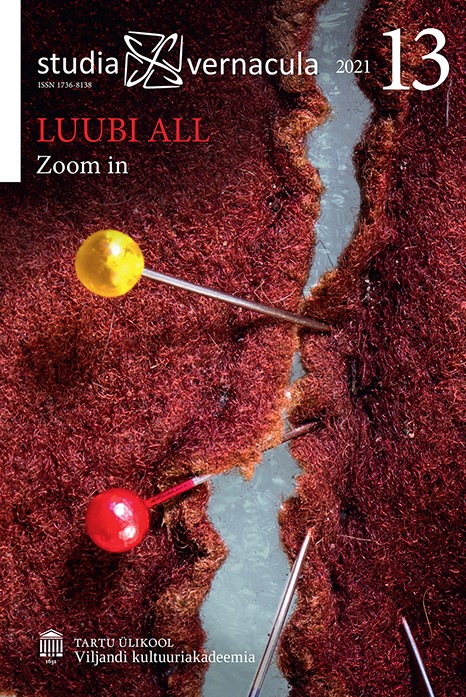Prantsuse kuningakojast Eestimaa talutarre: hüpoteese pott- ja kabimütside päritolust pärandtehnoloogi pilgu läbi / From French royal court to Estonian peasant house: some hypotheses about the origin of pot- and hoof-shaped caps from the perspective
DOI:
https://doi.org/10.12697/sv.2021.13.78-97Abstract
It has been thought that pot- and hoof-shaped caps were adopted in Estonia under the influence of peasant fashion in other European countries, especially Sweden and Finland. However, when compared to the head-dresses worn in Finland, the methods of making Estonian pot- and hoof-shaped caps seem so different, the question arises of whether the roots of this cap-making technique might be located elsewhere. For example, the technique and patterns used for making pot- and hoof-shaped caps are more reminiscent of Russian kokoshnik head-dresses.
It can be concluded that pot- and hoof-shaped caps worn in northern and western Estonia originate from the French coif of the later Middle Ages, although further developments mean that the caps we now have are rather different from their model, in terms of both shape and pattern. Our ethnographic literaturedoes not mention the strong influence of Russian folk costumes on Estonian traditional clothing. However, judging by construction techniques we may assume that pot- and hoof-shaped caps did not reach Estonia via Scandinavia. We should rather look for the source of this cap fashion in the east.
Hopefully this article will inspire fresh research work on ethnographic headgear. This broad research topic continues to be important as head-dresses have constituted, at all times, one of the most essential and expressive elements of costume, and interest in traditional clothing is still growing.
Keywords: caps, coifs, national costumes, pot-shaped caps, hoof-shaped caps, French cap, kokoshnik

